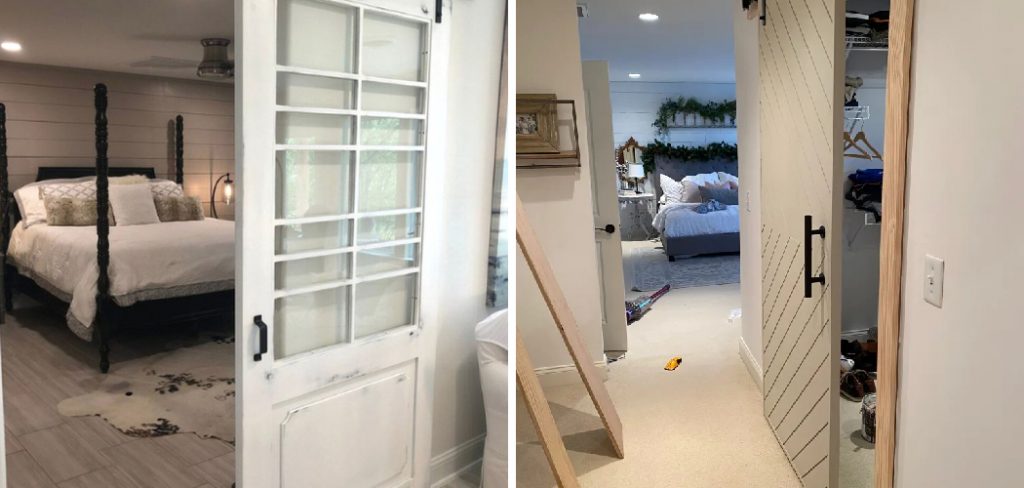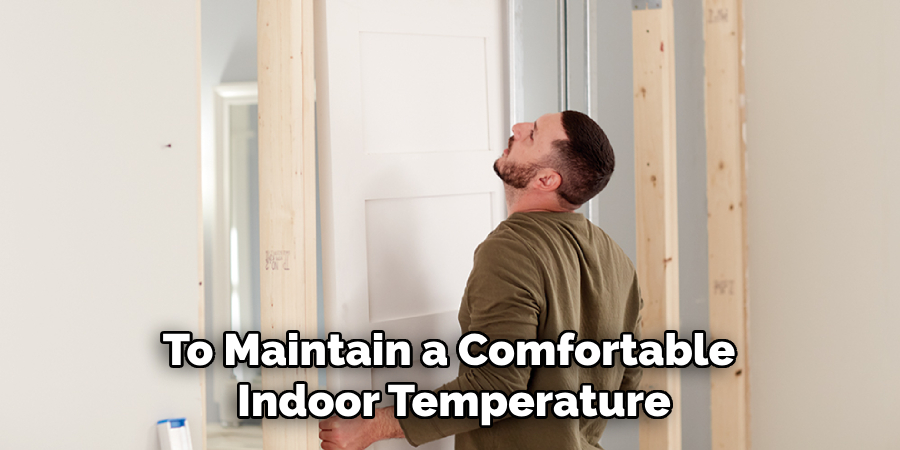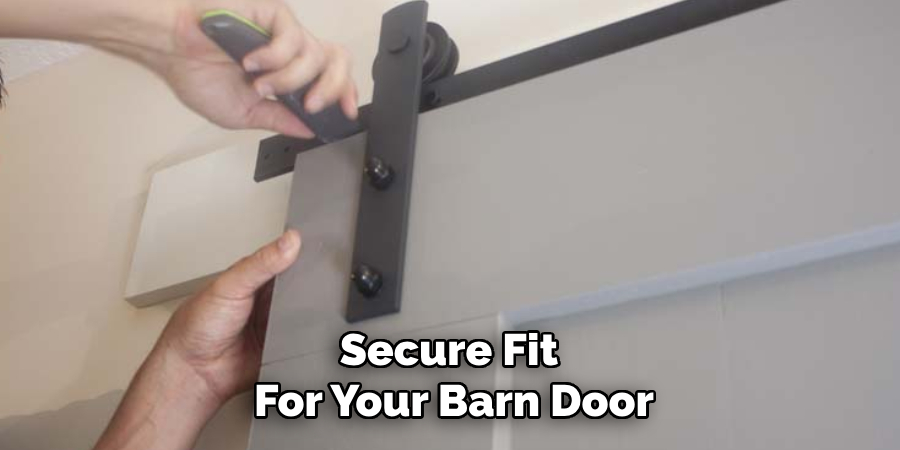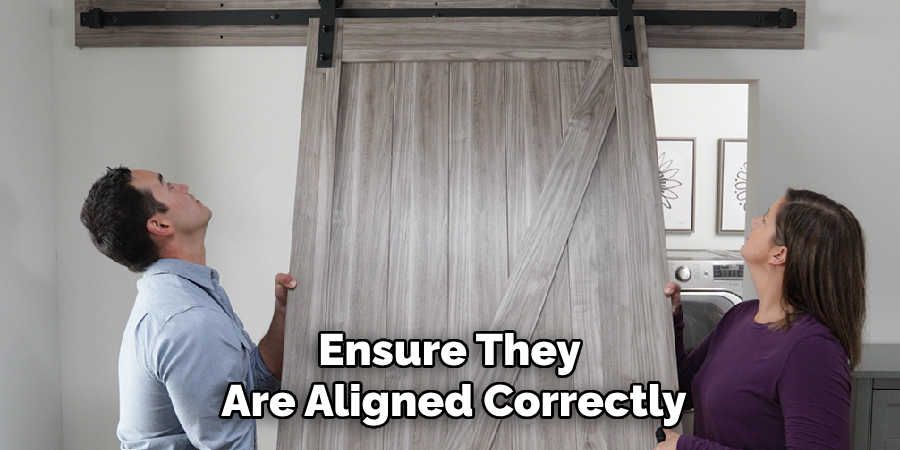Barn doors, known for their rustic charm and functional appeal, have become a popular choice in both traditional and modern homes. However, one common issue that homeowners face is the gap that often forms between the door and the frame.

This gap can lead to various problems, including drafts, loss of privacy, and even pest entry. Closing the gap on barn doors is crucial not only for maintaining the aesthetic appeal but also for improving the functionality and comfort of the living space. In this guide on how to close the gap on barn doors, we will explore practical solutions and techniques to effectively close the gap on barn doors, ensuring a snug and secure fit.
What is Causing the Gap?
Before we dive into the solutions, it is essential to understand what causes the gap in barn doors. One of the primary reasons is improper installation. If the door is not correctly aligned during installation, it can lead to uneven gaps between the door and frame. Another common cause is a warping of the door due to changes in temperature and humidity.
As wood is a natural material, it can expand or contract, causing gaps to form. Additionally, if the door hardware is not properly adjusted, it can also result in a gap between the door and frame. Identifying the root cause will help you determine the best approach to solve the gap issue.
Why is Closing the Gap Important?
Closing the gap on barn doors has both practical and aesthetic benefits. From a functional standpoint, it helps to maintain a comfortable indoor temperature by preventing drafts and air leakage. This can ultimately lead to energy savings and lower utility bills.

Moreover, closing the gap also enhances privacy and security. A properly fitted barn door will provide better protection against outside elements, ensuring a more secure living space. From an aesthetic perspective, closing the gap creates a seamless look that adds to the overall appeal of the barn door.
Needed Materials
To effectively close the gap on barn doors, you will need the following materials:
Measuring Tape:
A measuring tape is essential for accurately determining the size and length of the gap.
Weather Stripping:
Weatherstripping is a narrow strip of material used to fill gaps and seal openings. It comes in various materials such as foam, rubber, or felt.
Wood Shims:
Wood shims are small pieces of wood that can be used to adjust and level out any uneven gaps between the door and frame.
Caulk:
Caulk is a waterproof sealant that can be used to fill in any remaining gaps or cracks between the door and frame.
7 Step-by-step Guidelines on How to Close the Gap on Barn Doors
Step 1: Measure the Gap
Begin by carefully measuring the gap between the barn door and the frame. Use a measuring tape to determine both the width and length of the gap at various points along the door’s edge. This will help you identify any uneven points or variations in the gap size.
Record all measurements to ensure you have accurate data for the subsequent steps. Precise measurements are crucial for selecting the appropriate materials and ensuring an effective seal, ultimately leading to a snug and secure fit for your barn door.

Step 2: Install Weather Stripping
Once you have measured the gap, the next step is to install weather stripping to seal it. Choose a weather stripping material that best suits your needs, whether it be foam, rubber, or felt. Start by cleaning the area where the weather stripping will be applied; this ensures better adhesion. Cut the weather stripping to the appropriate length based on your measurements.
Begin at the top edge of the door and work your way down, pressing the weather stripping firmly into place. Make sure it adheres securely and there are no loose sections. For corners and bends, carefully align the weather stripping to ensure a continuous seal. Installing weather stripping effectively reduces drafts, enhances privacy, and contributes to a secure fit for your barn door.
Step 3: Use Wood Shims
If the door is not evenly aligned with the frame, you may need to use wood shims to adjust and level out any uneven gaps. Start by placing a shim into the gap and pushing it in until it is snug. Continue adding shims until the door is level and there are no remaining gaps.
Once the door is correctly leveled, secure the shims in place using a trim saw or utility knife. Be sure to leave enough room for caulking in the next step. Using wood shims can help close larger gaps and improve the overall fit of your barn door.
Step 4: Apply Caulk
Caulk is an excellent solution for filling in any remaining gaps or cracks between the door and frame. Using a caulk gun, apply a generous amount of caulk along the edges of the door where it meets the frame. Smooth out the caulk using your finger or a caulking tool to create a seamless finish.
For larger gaps, you may need to apply multiple layers of caulk, allowing each layer to dry before adding another one. Once dry, trim off any excess caulk using a utility knife for a neat and tidy finish. Applying caulking provides a waterproof seal, improving energy efficiency and maintaining the aesthetic appeal of your barn door.
Step 5: Adjust Door Hardware
If the gap between the door and frame is due to misaligned or loose hardware, you can adjust it to achieve a better fit. Tighten any loose screws or bolts that may be causing gaps. You can also try adjusting the hinges to ensure they are aligned correctly.

If necessary, replace old or worn-out hardware with new ones for a more secure fit. Properly adjusted hardware will contribute to closing any remaining gaps and ensuring smooth operation of your barn door.
Step 6: Sand and Refinish
If the gap is due to warping of the door, sanding and refinishing may be necessary to correct the issue. This step can help remove any uneven or raised areas on the door that may be causing gaps.
Begin by sanding down any rough spots using a medium-grit sandpaper. Gradually switch to finer grits until all imperfections are smoothed out and the door’s surface is even. You can then apply a fresh coat of paint or stain to refinish the door, restoring its beauty and functionality.
Step 7: Regular Maintenance
To prevent gaps from occurring in the future, it is essential to perform regular maintenance on your barn door. This includes checking for loose hardware, cleaning and replacing weather stripping when necessary, and addressing any warping or damage promptly.
Following these simple maintenance steps on how to close the gap on barn doors will help keep your barn door in top condition, ensuring a secure and snug fit for years to come.
Additional Tips
Inspect Regularly
Schedule periodic inspections to ensure your barn door continues to function optimally. Look for any signs of wear and tear, such as frayed weather stripping, worn-out caulk, or loose hardware. Early detection of issues can prevent larger problems from developing.
Lubricate Hardware
Keeping your door’s hardware lubricated can enhance its smooth operation. Use a silicone-based lubricant on the hinges and rollers to reduce friction and prevent squeaking. Avoid using oil-based lubricants as they can attract dust and debris.
Monitor Environmental Factors
Environmental conditions such as humidity and temperature fluctuations can affect the wood and materials used in your barn door. It’s important to monitor these factors and make adjustments as needed to maintain the door’s integrity and functionality.
Upgrade Insulation
For additional energy efficiency, consider upgrading the insulation around your barn door. This can help regulate the temperature within your space and reduce energy costs. Insulated doors are particularly useful in climates with extreme temperatures.
Consult a Professional
If you encounter persistent issues or find that your attempts to close the gap are not effective, consulting a professional can provide a definitive solution. A professional will have the expertise and tools necessary to address complex problems and ensure your barn door operates efficiently.

Frequently Asked Questions
Q: How Do I Know Which Weather Stripping Material to Use?
A: This will depend on your specific needs and the size of the gap. Foam weather stripping is ideal for smaller gaps, while rubber or felt may be better for larger ones. Consider the location of your barn door and its exposure to weather when choosing a material.
Q: Can I Use Caulk Alone to Close Gaps on Barn Doors?
A: While caulk can help fill in small gaps, it is best used in combination with other materials, such as weather stripping or wood shims, for larger and uneven gaps. This will provide a more secure and long-lasting seal for your barn door.
Q: How Often Should I Perform Maintenance on My Barn Door?
A: Regular maintenance should be performed at least once every few months or whenever you notice any issues with the fit of your barn door. This will help prevent larger gaps from forming and keep your door functioning properly.
Conclusion
Closing the gap on barn doors not only provides practical benefits such as energy efficiency and security but also enhances the overall aesthetic appeal. With the right materials and step-by-step guidelines on how to close the gap on barn doors, anyone can effectively close gaps on their barn doors.
Regular maintenance will also help prevent future gaps from occurring, ensuring your barn door remains in top condition for years to come. So go ahead and use these tips to close the gaps in your barn doors and enjoy a snug, secure, and visually appealing entrance to your barn. Happy DIY-ing!
About
Safety Fic is a distinguished figure in the world of Diy design, with a decade of expertise creating innovative and sustainable Diy solutions. His professional focus lies in merging traditional craftsmanship with modern manufacturing techniques, fostering designs that are both practical and environmentally conscious. As the author of diy, Safety Fic delves into the art and science of Safety Fic-making, inspiring artisans and industry professionals alike.
Education RMIT University
(Melbourne, Australia) Associate Degree in Design (Safety Fic) Focus on sustainable design, industry-driven projects, and practical craftsmanship. Gained hands-on experience with traditional and digital manufacturing tools, such as CAD and CNC software.
Nottingham Trent University
(United Kingdom) Bachelor’s in diyfastly.com and Product Design (Honors) Specialized in product design with a focus on blending creativity with production techniques. Participated in industry projects, working with companies like John Lewis and Vitsoe to gain real-world insights.
Publications and Impact
In diy, Safety Fic his insights on indoor design processes, materials, and strategies for efficient production. His writing bridges the gap between artisan knowledge and modern industry needs, making it a must-read for both budding designers and seasoned professionals.
